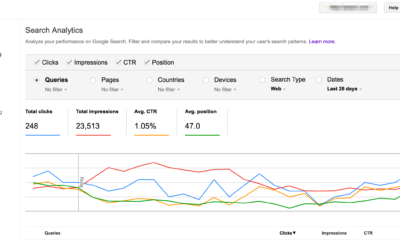News
Android Phones can detect earthquakes even before they happen, study finds

A groundbreaking study published today in Science reveals that a global earthquake early-warning (EEW) system using Android smartphones has proven to be nearly as effective as traditional seismic networks offering a scalable, low-cost solution for earthquake-prone countries that lack dedicated seismic infrastructure.
Researchers from the U.S. and Germany, including Richard Allen of UC Berkeley’s Seismological Laboratory, tested the Android Earthquake Alerts (AEA) system across 98 countries between 2021 and 2024.
Leveraging the widespread use of smartphones, particularly Android devices, which make up roughly 70% of the global smartphone market, the AEA system was able to detect an average of 312 earthquakes per month, with alerts issued for around 60 significant quakes (magnitude 4.5 or higher) monthly, reaching over 18 million users.
Unlike conventional networks that rely on permanent seismic instruments, the AEA system taps into accelerometers already built into Android smartphones.
Though less sensitive, these sensors are capable of detecting seismic waves, particularly the fast-traveling P waves and more destructive S waves, allowing the system to quickly send data to Google’s servers.
Once an event is verified, alerts are sent out almost instantly, often ahead of the ground shaking.
“The global adoption of smartphone technology places sophisticated sensing and alerting capabilities in people’s hands,” the researchers wrote.
“This is true for both the wealthy and less-wealthy portions of the planet.”
The speed advantage is crucial. While seismic waves travel through the earth at a finite pace, digital signals move much faster.
This means users located farther from an earthquake’s epicenter often receive alerts seconds before the shaking begins, potentially enough time to seek shelter or take cover.
User feedback has confirmed the system’s value: 85% of those who received alerts reported feeling shaking, with 36% getting the warning beforehand.
The study emphasizes that while AEA isn’t a replacement for national systems, it offers a powerful supplement, especially in underserved regions.
Earthquakes remain unpredictable, but the researchers see AEA as a major step forward. “Large earthquakes remain the most important and challenging for all EEW systems,” they noted.
“The global implementation of AEA supports efforts to improve detection with rapid, large-scale data collection and feedback to algorithms.”
In a world where high-tech solutions are often prohibitively expensive, this study shows that sometimes, the key to saving lives could already be in your pocket.
-

 Domains6 years ago
Domains6 years ago8 best domain flipping platforms
-

 Business5 years ago
Business5 years ago8 Best Digital Marketing Books to Read in 2020
-

 How To's6 years ago
How To's6 years agoHow to register for Amazon Affiliate program
-

 How To's6 years ago
How To's6 years agoHow to submit your website’s sitemap to Google Search Console
-

 Domains5 years ago
Domains5 years agoNew 18 end user domain name sales have taken place
-

 Business6 years ago
Business6 years agoBest Work From Home Business Ideas
-

 How To's5 years ago
How To's5 years ago3 Best Strategies to Increase Your Profits With Google Ads
-

 Domains5 years ago
Domains5 years agoCrypto companies continue their venture to buy domains








